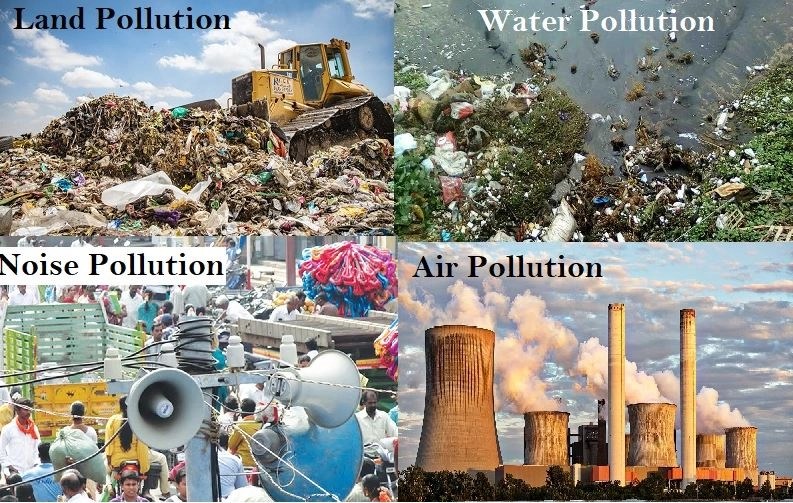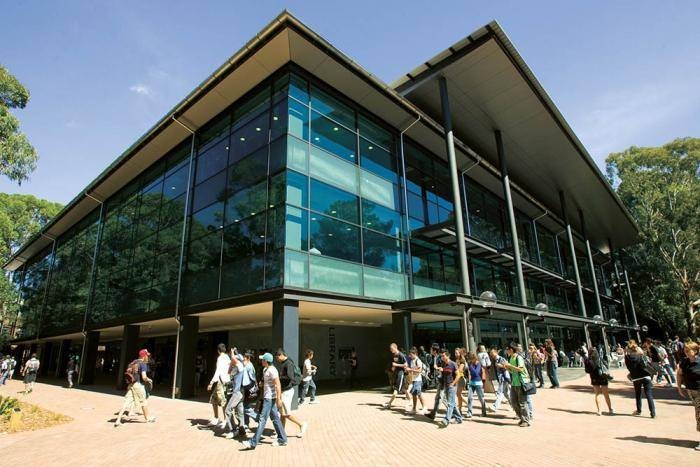
With innovation comes development and growth, also with innovation and development the environment and society in which we live, has been adversely affected. In recent times, we see a lot of discussions about global warming, destruction of the ecosystem, blue economy and so on. These discussions are geared towards making the environment a better place, as a result of the changes that have occurred because of pollution of various parts of our environment.
However, in this article, we are going to focus on pollution and we are going to answer different questions. How do we directly or indirectly pollute our environment? Types of pollution? The causes of pollution and then how can we remedy the situation of pollution or better still, prevent it.
Let’s start with a brief introduction to pollution.
types of pollution
Introduction
Environmental pollution is currently the world’s most serious problem. 40 percent of rivers and 46 percent of lakes in the United States are too filthy for fishing, swimming, and aquatic life. It’s hardly surprising, given that 1.2 trillion gallons of untreated stormwater, industrial waste, and untreated sewage are discharged into American waterways each year.
One-third of the world’s topsoil has already deteriorated, and at the present pace of soil degradation caused by inappropriate agricultural and industrial practices, as well as deforestation, the majority of the world’s topsoil may be gone within the next 60 years.
In 1952, the Great Smog killed 8000 people in London. This occurrence was caused by a stretch of cold weather mixed with windless circumstances, which resulted in the formation of a dense layer of airborne pollutants above the city, primarily from coal plants.
Now, let’s bring the topic a bit closer to home (Nigeria), how has the issue of pollution affected us?
Nigeria has the highest number of fatalities from air pollution in Africa, and the country ranks fourth in the world for air pollution. According to statistics, there were 150 deaths per 100,000 persons in 2016 as a result of this environmental hazard. According to the Health Effects Institute’s (HEI) State of the Global Air Report, Nigeria’s air quality is among the most dangerous in the world. Air pollution is caused by atmospheric hazards such as generator fumes, car emissions, and crop burning.
According to the HEI, developed nations such as Russia and Germany had lower death rates than Nigeria in 2016, with 62 and 22 deaths per 100,000 population, respectively.
Pollution comes from a variety of sources, each with its impact on the environment and living beings. This article will go through the causes and impacts of many types of pollution. But first, we shall start by defining pollution.
Define Pollution
What is Pollution? Pollution is anything that makes our land, air and water dirty and unsafe for our use.
There are four types of pollution and they are;
- Air pollution
- Water pollution
- Noise pollution
- Land and Soil pollution
Types of Pollution
1) Air pollution:
Air pollution is a situation whereby the air is harmful to us to breathe. Examples of air pollution: Smokes from factories and fumes from car exhaust, generator smoke, industrial waste, cigarettes, kerosene stove, bush burning, dust and the burning of refuse.
2) Water pollution:
Water pollution occurs when the water is made harmful for humans as well as animals to consume. This is a situation whereby the water has been contaminated by introducing toxic materials/chemicals into the water. Wastewater, sewage, and fertilizers all contribute to water contamination.
Examples of water pollution: Pesticides and herbicides applied to crops can be washed off into water bodies by rain, oil spills and also industrial wastes are another source of water pollution. This is a situation whereby industries dispose of some of the chemicals used in making or producing some of their materials into nearby rivers or other water bodies.
3) Noise Pollution:
Noise is a pollutant that is produced by home sources, social gatherings, commercial and industrial operations, and transportation. Any unnecessary loud noise that disturbs the peace of people within an environment is regarded as noise pollution. Noise pollution can also be defined as an unpleasant sound that affects our ears and leads to stress or hearing impairment.
Examples of noise pollution: Machines in factories, loud music, road noise, and noise from building operations are all sources of noise pollution.
4) Land and Soil Pollution:
Land pollution is the degradation of land caused by human activities and the mismanagement of land resources. This happens when humans apply chemicals to the soil, such as pesticides and herbicides, inappropriate disposal of trash, and recklessly mining of minerals.
Examples of land and soil pollution: Soil is also contaminated by leaky subterranean septic tanks, sewage systems, the leaching of hazardous chemicals from landfills, and the direct discharge of wastewater into rivers and seas by industrial enterprises. Rain and flooding can transport contaminants from already contaminated fields to soil in other areas.
Now let’s discuss the effect of pollution on the environment as well as on all living things.
Effect of Pollution on the Environment/Humans/Wildlife
Pollution manifests itself in the form of dust, smog, and hazardous gas releases. Pollution can originate from a variety of sources, including natural and human activities.
1) Effect of Air Pollution:
Polluted air can raise the risk of heart attack, wheezing, coughing, and breathing issues, as well as eye, nose, and throat discomfort. Air pollution can also aggravate pre-existing cardiac conditions, asthma, and other lung issues. Animals, like people, can suffer from a variety of health issues caused by air pollution, including birth abnormalities, reproductive failure, and illnesses.
In addition to the impacts on humans and animals, air pollution has a variety of environmental consequences. Acid rain comprises high concentrations of nitric and sulfuric acids, which are produced by oxides and sulfur oxides released into the atmosphere by the combustion of fossil fuels.
2) Effect of Water Pollution:
Water pollution endangers humans, animals, and aquatic life. The consequences of water contamination are determined by which chemicals are put in were.
Bodies of water surrounding metropolitan regions are highly contaminated by the illicit and legal disposal of waste and chemicals by industrial companies, health institutions, and people. The mortality of aquatic species is by far the most serious effect of water pollution, and it has the potential to disrupt the entire food chain. Pollutants like cadmium, mercury, and lead are consumed by small aquatic creatures, which are subsequently consumed by fish and shellfish, becoming more concentrated with each step up the food chain and creating significant health issues in humans and animals.
Toxic algal blooms in drinking water sources can be caused by nutrient pollution, which produces poisons that harm fish and other aquatic creatures. In humans, direct contact with this poisonous alga produces significant health problems such as neurological consequences, respiratory difficulties, stomach and liver sickness, and rashes.
3) Effect of Noise Pollution:
Noise pollution can induce stress, anxiety, headaches, irritation, hearing loss, and sleep loss, all of which can lead to lower productivity. Excessive noise from oil drilling, submarines, and other boats on and in the water has resulted in the damage or death of marine creatures, particularly whales.
4) Effect of Land and Soil Pollution:
Humans, animals, microbes, and aquatic life all suffer as a result of land and soil pollution. Contaminated land and soil can cause skin disorders, respiratory issues, and even several types of cancer. These hazardous chemicals come into direct touch with the human body by eating fruits and vegetables produced in polluted soils, drinking contaminated water, direct contact with the skin, and inhaling air polluted with dust and particles.
When it comes to land degradation and soil erosion, deforestation is the most serious problem. Clear cutting of vegetation and tree cover results in severe circumstances that devastate ecosystems and habitats.
Deforestation also disrupts atmospheric conditions, lowering the amount of carbon that is normally removed from the atmosphere. This is a severe issue since the majority of pollution produced by humans is carbon-based.
At this stage, I know some of us may ask, how do we prevent/remedy the effect of pollution?
How To Remedy the Effects of Pollution
- Do regular sanitation around your environment.
- There should be government regulations on the distance between residential areas and industries.
- There should be a provision of good drinking water for people by the government.
- There should be regulations against indiscriminate burning of bush and cutting of trees.
- Proper disposal of refuse/waste should be ensured.
- All landlords should ensure the provision of toilets facilities in their houses to prevent tenants from polluting the environment.
In conclusion, it is our collective responsibility to make a collective effort to reduce pollution since it is ruining our ecosystem, polluting our food and water, causing illnesses and cancers in humans and wildlife, and damaging the air we breathe and the atmosphere that protects us from dangerous ultra-violet radiation.
It is everyone’s obligation to safeguard the environment, and with the world’s population growing, environmental problems will only worsen unless we do something about it. Protecting the environment is a difficult and time-consuming undertaking that needs ongoing planning, government regulations, and public and industrial engagement. Neglecting the issue, on the other hand, would have terrible repercussions, and life as we know it can come to an end.
We can dramatically reduce the quantity of pollution entering the environment each year and improve our quality of life by reducing trash, enacting recycling programs, prohibiting harmful agricultural chemicals, and creating safe renewable energy.



